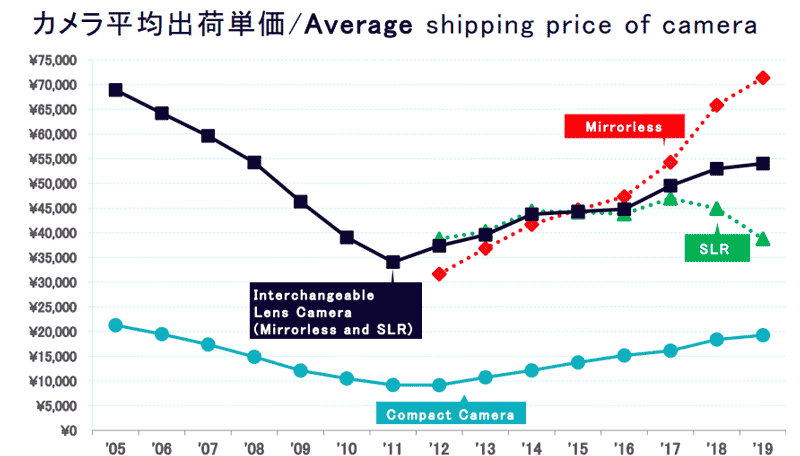A recent report coming out of the Japanese news agency Nikkei.com rates Canon as the market leader in interchangeable cameras for 2019, with daylight second.
– Actually its Nikon second, but Canon’s market share in terms of units shipped is well over twice that of Nikon’s – and equal to that of Nikon, Sony and Fujifilm combined!
Shipments of interchangeable lens cameras in 2019 (Nikkei.com):
Canon: 4.16 million
Nikon: 1.73 million
Sony: 1.66 million
Fujifilm: 500,000
Olympus: 330,000
Others: 280,000
Less encouraging for Canon was market share in numbers of mirrorless cameras shipped, where Sony likewise accounted for almost as many camera bodies as Canon, Fujifilm and Olympus combined. (Nikkei.com):
Sony: 1.65 million
Canon: 940,000
Fujifilm: 500,000
Olympus: 330,000
Nikon: 280,000
Others: 240,000
While no-one would begrudge either Canon or Sony bragging rights for their 2019 achievements, that’s ‘so last year’. It’s also based on units shipped, rather than the value of those units. Camera retailers don’t budget to sell X number of cameras – they budget to achieve revenue goals. Similar, but not the same.
And the Nikkei figure for total cameras shipped is about 200,000 cameras higher than the figures coming from ‘the horses mouth’ – the Japanese camera manufacturers’ association, CIPA.

But the story that counts is 2020 – specifically the last couple of months – and the dramatic change in the value and format of interchangeable cameras being shipped. We are witnessing an historic transition.
Looking at the CIPA shipment figures for July this year we see that there were 135,000 DSLRs shipped for the month. The value of those shipments were put at (a rounded off) 6 billion yen. When we look at the mirrorless category, 215,000 cameras were shipped – so around 60 percent more mirrorless cameras than DSLRs. But the value of those cameras was a total of 19.3 billion yen. Not only were there more cameras shipped, but the average selling price was dramatically higher. For that month, at least, the value of mirrorless cameras shipped was over three times the value of DSLRs shipped. It looks like a lot of Canon’s huge market share in 2019 consisted of budget-priced hobbyists’ cameras.
Of course one month’s shipment data can be deceiving, but if we look at production figures for the same month – these will be shipped in the following month or two, so around now – the trend continues. There were 99,oo0 DSLRs manufactured, worth 4.3 billion yen, compared to 226,000 mirrorless cameras, worth 12.9 billion yen.
The figures from January-July reinforce the fact that mirrorless is not only the dominant format in 2020, but by far the most lucrative. So not only will a retailer sell more mirrorless cameras than DSLRs, each sale will be worth about twice as much. DSLR shipments were 1.15 million in unit terms and just under 50 billion yen in value. Mirrorless shipments were a tad more – 1.22 million cameras – but those cameras were valued at 92 billion yen.
So who would you rather be? Canon, the undisputed market leader in 2019, but with a big bias towards the fast-fading, increasingly low-end DSLR market; or Sony, with a similarly undisputed market leadership in the now-dominant and higher value mirrorless format? This accantuates just how imperative the success of cameras like the R5 and R6 are to Canon maintaining its long-held market leadership. Please discuss!
Related: Canon goes its own way





Be First to Comment